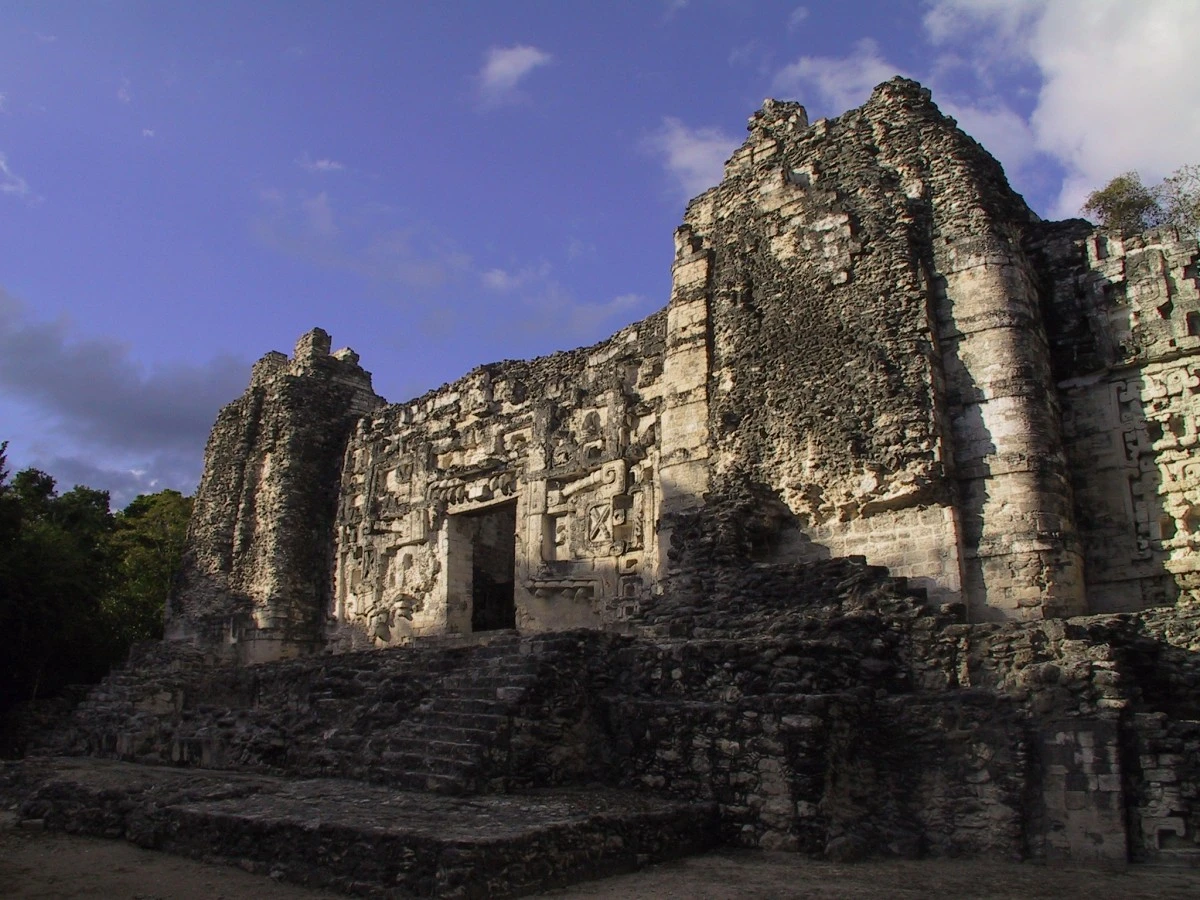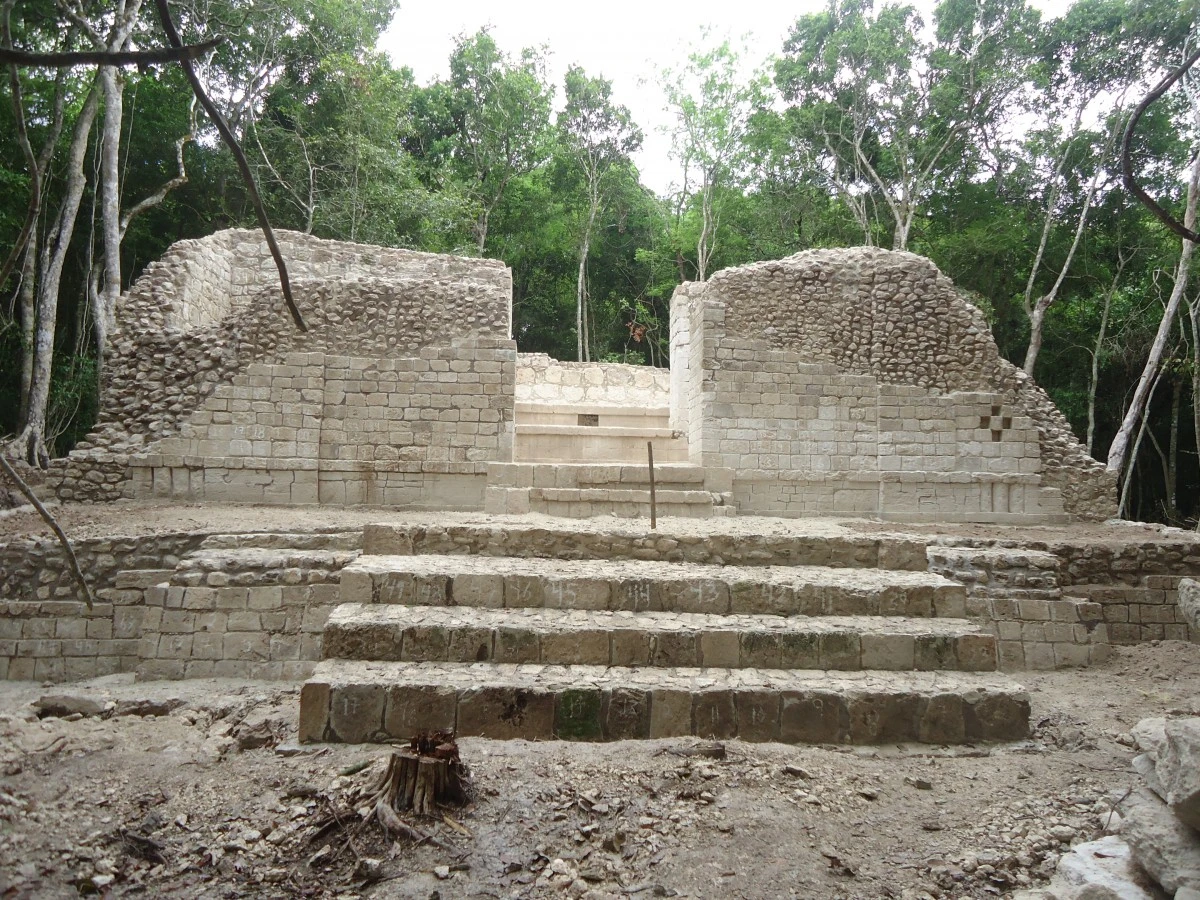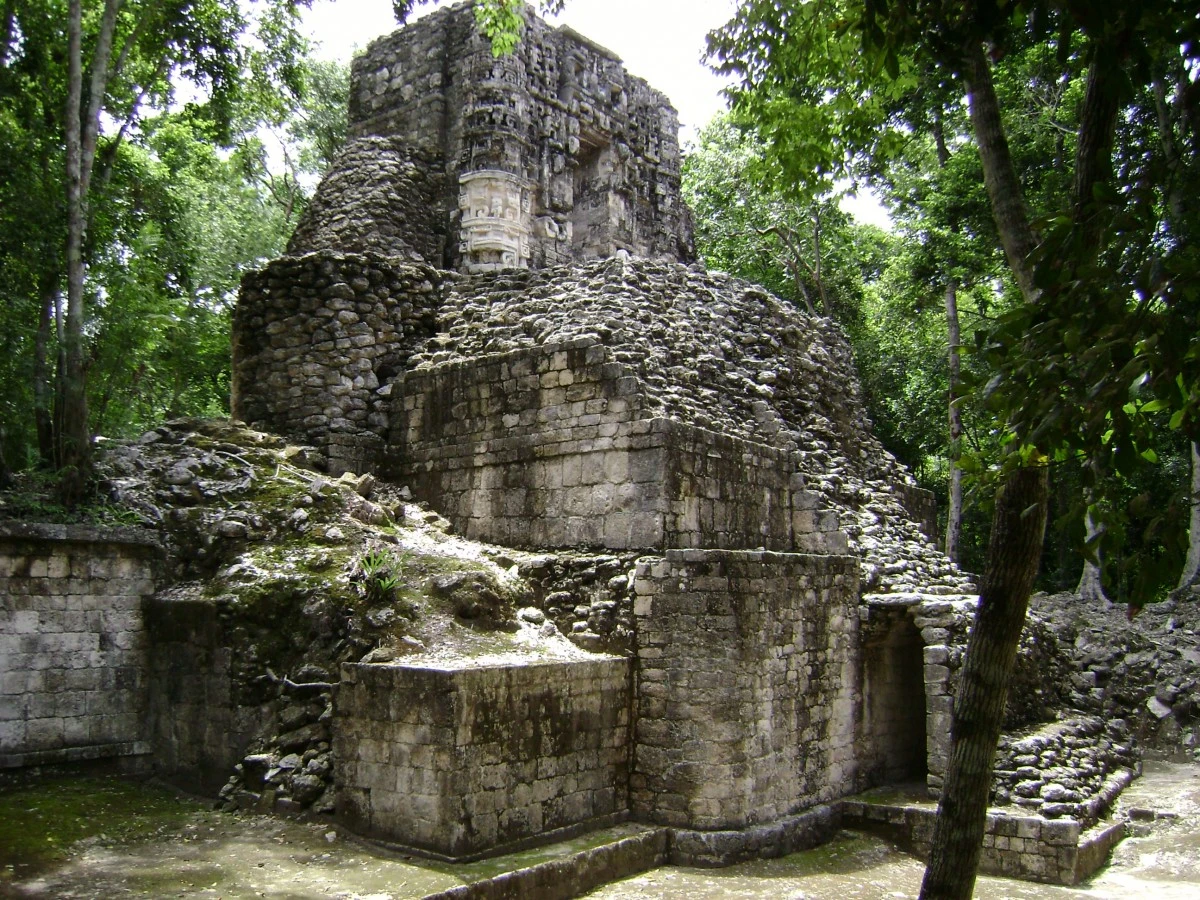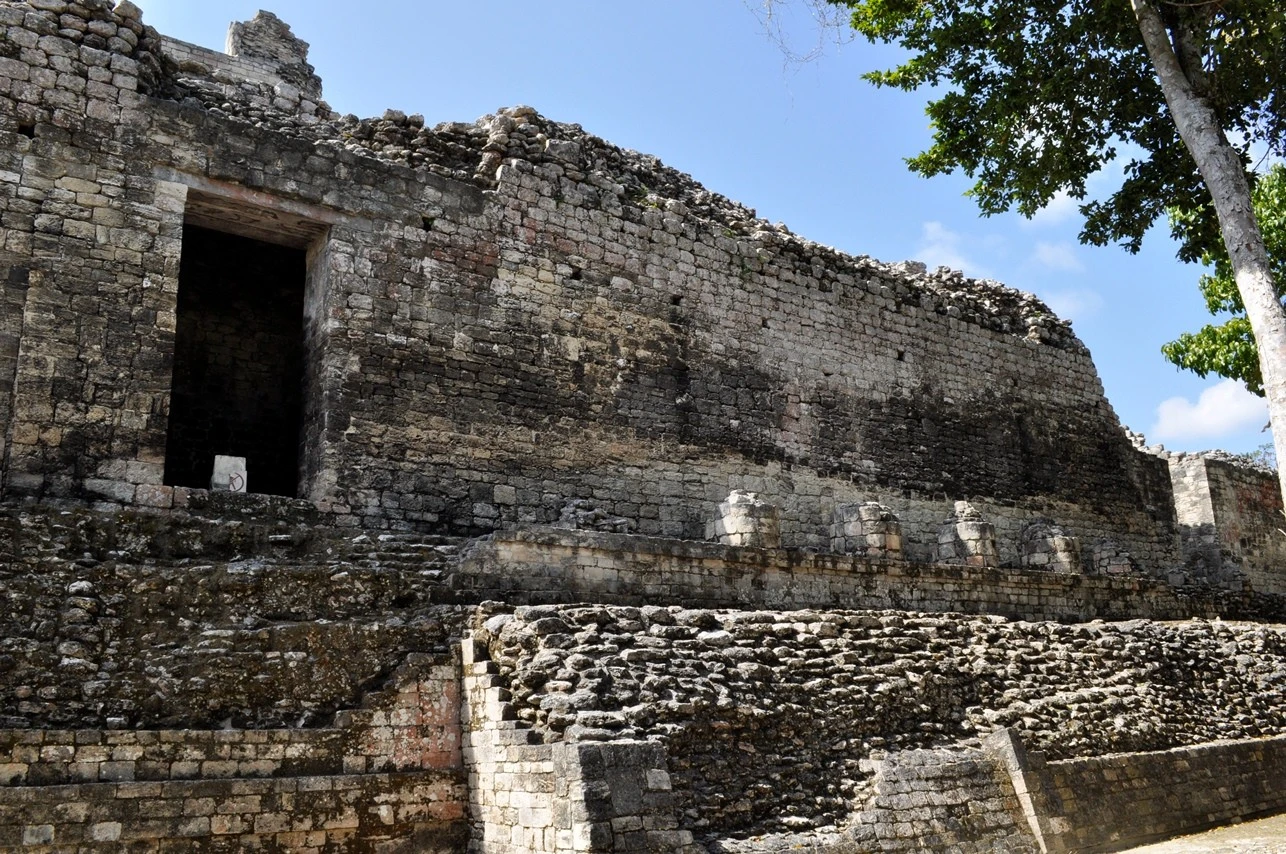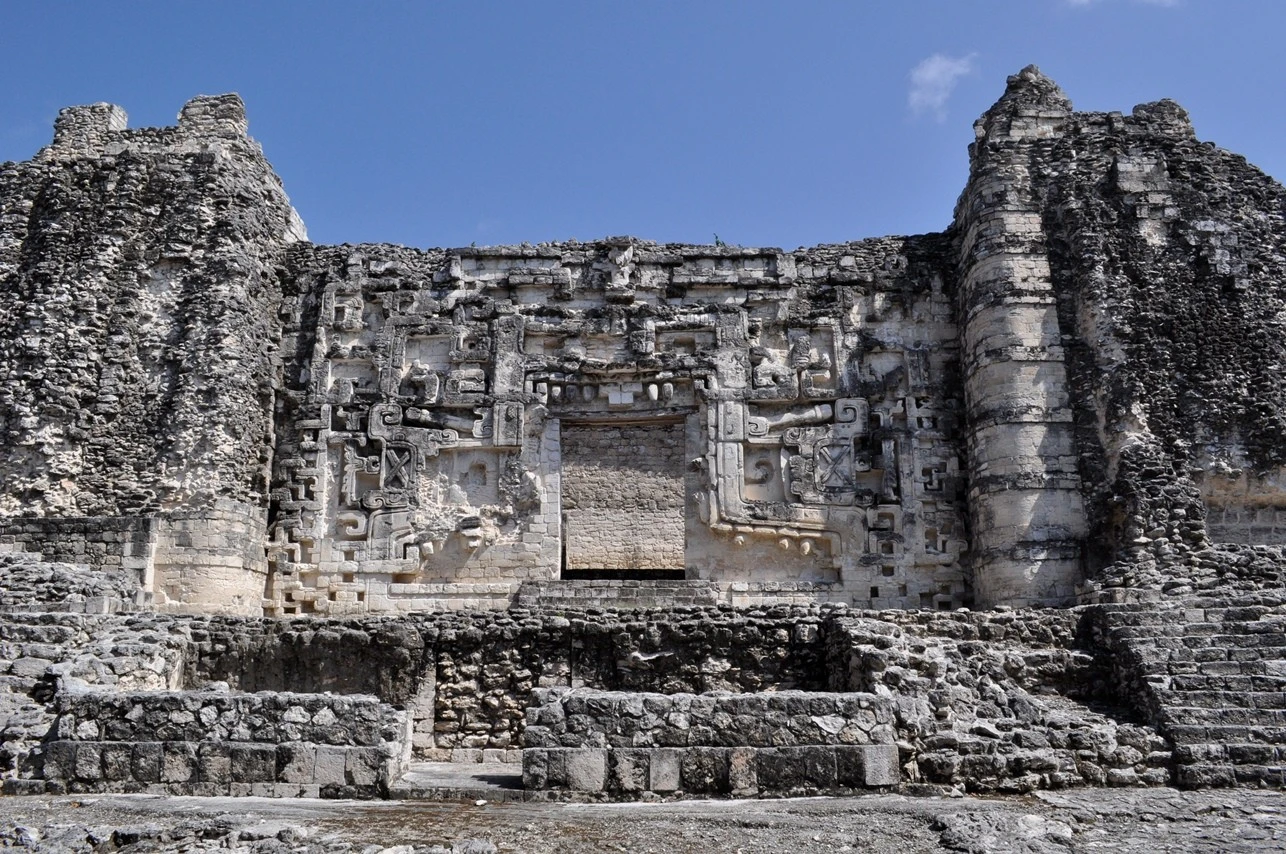
Hormiguero Archaeological Site
Campeche
Located in the lush jungle of southern Campeche, El Hormiguero is an archaeological site hosting around a hundred pre-Hispanic structures. Its name derives from the chiclero camp that existed near the archaeological remains in the 1930s.
This Maya city, subordinate to Becán, was established in the Late Formative period and flourished in the Early Classic period. Its significance lies in its role as the center of the Río Bec region, with a population estimated in the thousands during its peak. Its architecture showcases a blend of Maya and Toltec styles, with monumental structures reflecting the power and sophistication of the society that inhabited it.
Among its highlights is a building featuring a mask representing an entrance to the underworld, as well as a zoomorphic façade and masks of Chaac, the rain god, adorning other structures. These architectural and artistic features demonstrate the complexity of the cosmology and religious beliefs of the ancient inhabitants of the region.
Today, El Hormiguero is accessible via the Maya Train route, which connects various archaeological sites and tourist destinations on the Yucatán Peninsula.
Near Station
Xpuhil
Meaning
Unknown
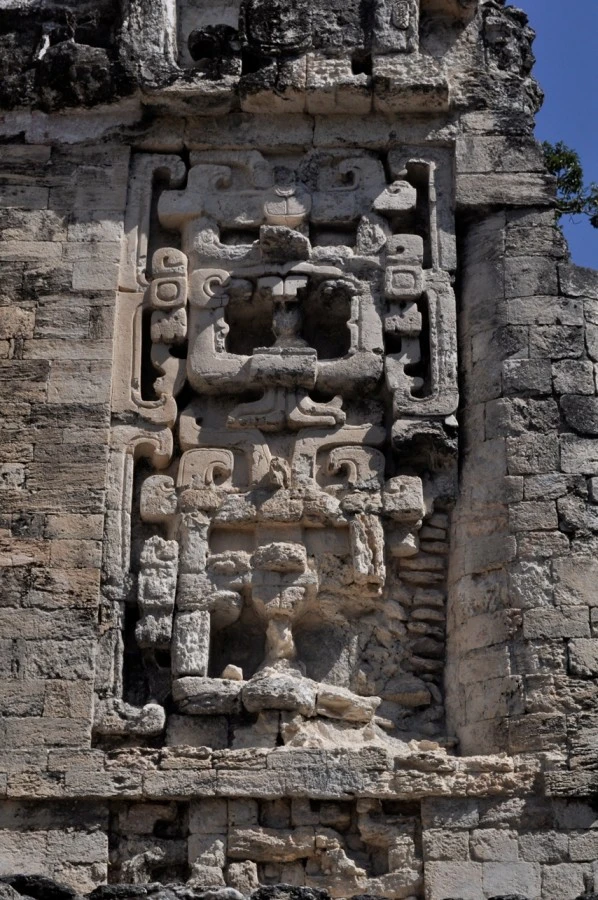
Schedule:
Monday to Sunday from 8:00 am to 17:00 hrs. Last entry at 16:45 hrs.
Admission:
Free admission
Chronology:
300 B.C. – 950 | Early Classic to Late Classic
Where is the Hormiguero Archaeological Site Located?
It is located in the eastern sector of the Calakmul Biosphere Reserve and approximately 24 km southwest of the town of Xpuhil.
Important:
- Fee for video camera
- Fee for professional cameras
- No smoking allowed, food and pets.
The decoration of its most relevant buildings features masks on their main facades, which reflect the ideological and dynastic importance of the local elite.

